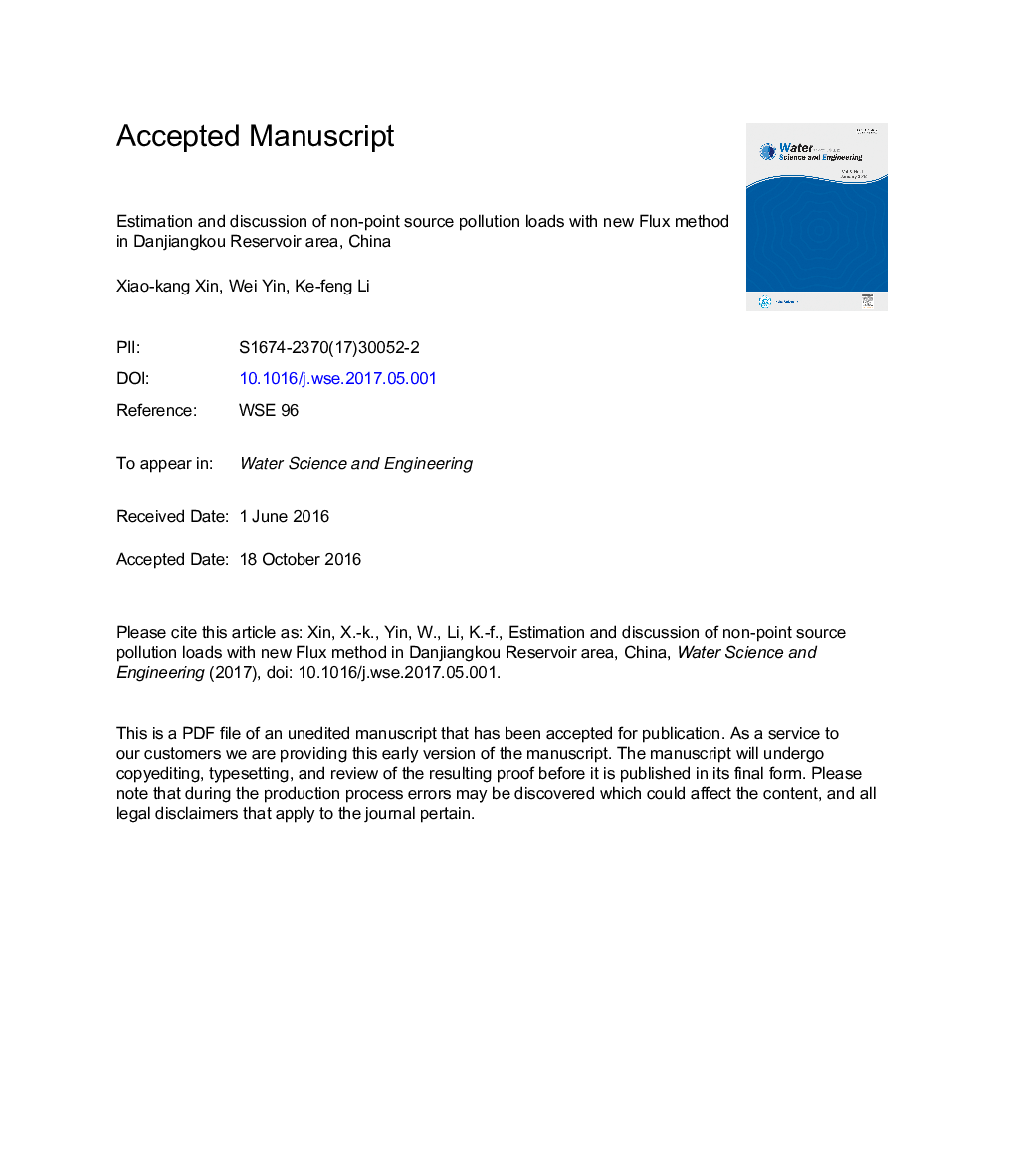| کد مقاله | کد نشریه | سال انتشار | مقاله انگلیسی | نسخه تمام متن |
|---|---|---|---|---|
| 4929459 | 1432336 | 2017 | 11 صفحه PDF | دانلود رایگان |
عنوان انگلیسی مقاله ISI
Estimation of non-point source pollution loads with flux method in Danjiangkou Reservoir area, China
دانلود مقاله + سفارش ترجمه
دانلود مقاله ISI انگلیسی
رایگان برای ایرانیان
کلمات کلیدی
موضوعات مرتبط
مهندسی و علوم پایه
سایر رشته های مهندسی
مهندسی عمران و سازه
پیش نمایش صفحه اول مقاله

چکیده انگلیسی
The estimation of non-point source pollution loads into the Danjiangkou Reservoir is highly significant to environmental protection in the watershed. In order to overcome the drawbacks of traditional watershed numerical models, a base flow separation method was established coupled with a digital filtering method and a flux method. The digital filtering method has been used to separate the base flows of the Hanjiang, Tianhe, Duhe, Danjiang, Laoguan, and Qihe rivers. Based on daily discharge, base flow, and pollutant concentration data, the flux method was used to calculate the point source pollution load and non-point source pollution load. The results show that: (1) In the year 2013, the total inflow of the six rivers mentioned above accounted for 95.9% of the total inflow to the Danjiangkou Reservoir. The total pollution loads of chemical oxygen demand (CODMn) and total phosphorus (TP) from the six rivers were 58.20Â ÃÂ 103Â t and 1.863Â ÃÂ 103Â t, respectively, and the non-point source pollution loads were 39.82Â ÃÂ 103Â t and 1.544Â ÃÂ 103Â t, respectively, indicating that the non-point source pollution is a major factor (with a contribution rate of 68.4% for CODMn and 82.9% for TP). (2) The Hanjiang River is the most significant contributor of pollution loads to the Danjiangkou Reservoir, and its CODMn and TP contribution rates reached 79.3% and 83.2%, respectively. The Duhe River took the second place. (3) Non-point source pollution mainly occurred in the wet season in 2013, accounting for 80.8% and 90.9% of the total pollution loads of CODMn and TP, respectively. It is concluded that the emphasis of pollution control should be placed on non-point source pollution.
ناشر
Database: Elsevier - ScienceDirect (ساینس دایرکت)
Journal: Water Science and Engineering - Volume 10, Issue 2, April 2017, Pages 134-142
Journal: Water Science and Engineering - Volume 10, Issue 2, April 2017, Pages 134-142
نویسندگان
Xiao-kang Xin, Wei Yin, Ke-feng Li,